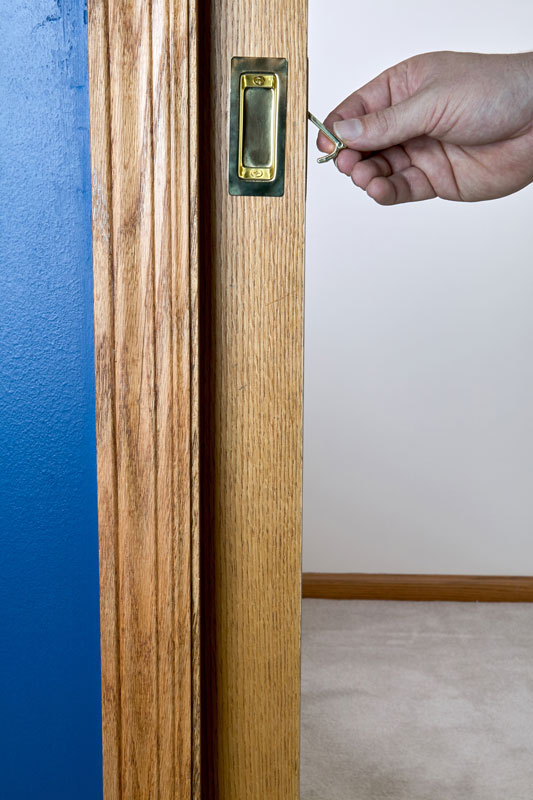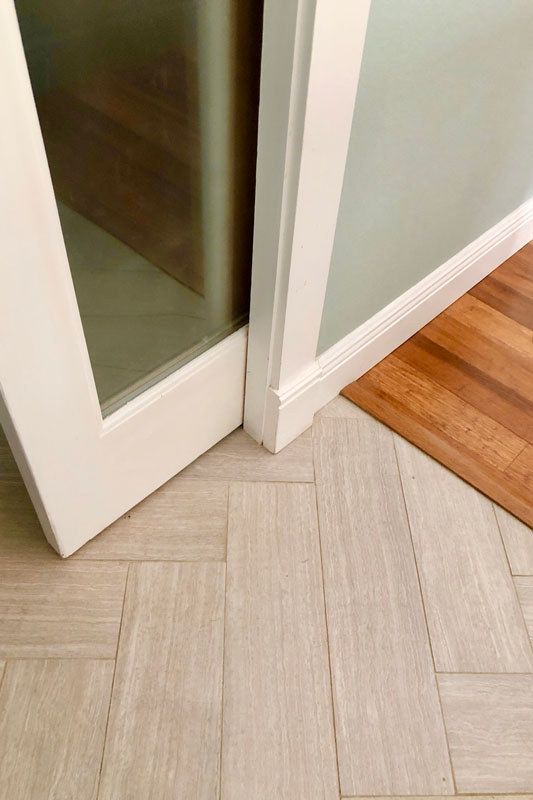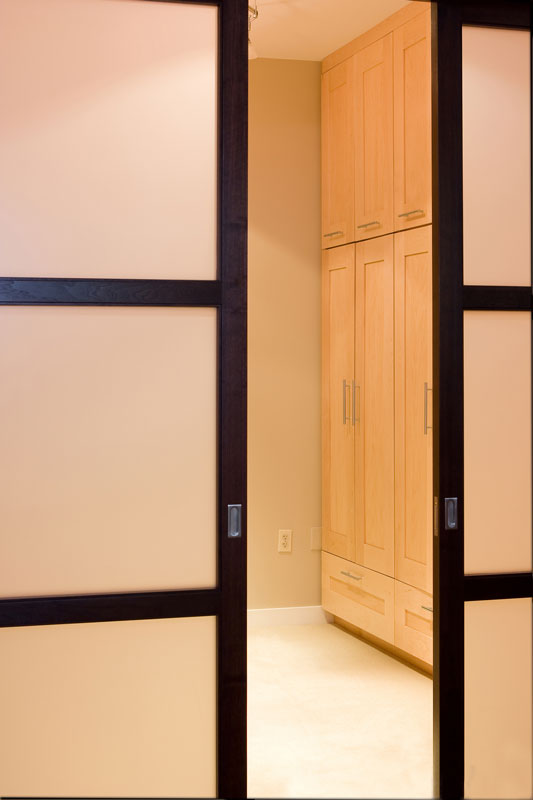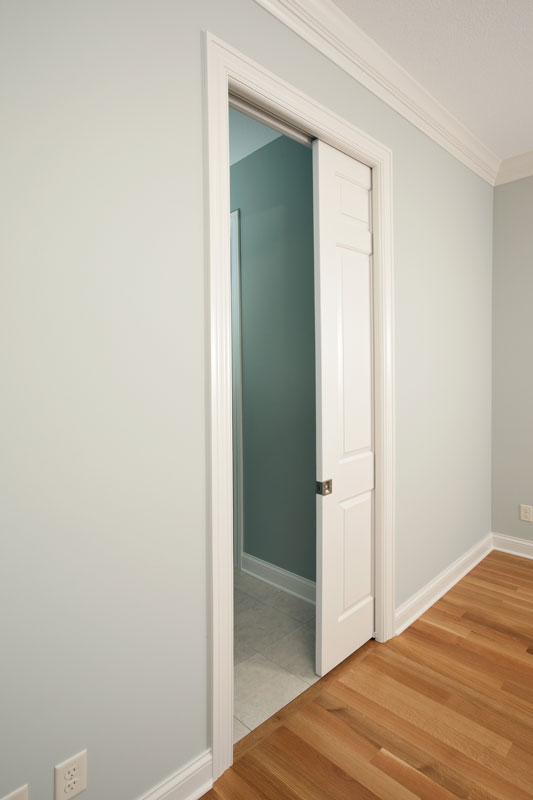If you're looking into getting a pocket door for your home, you've probably wondered if the wall it is installed in should be load-bearing. Fortunately, we've looked into this topic and in this post, we will be discussing the kind of walls that work with pocket door installations.
A pocket door wall doesn't necessarily have to be load-bearing, but it can definitely be installed in one. A structural engineer can help you put up a load-bearing header, which is important for your pocket door's frame and the load that your wall has to carry.
Knowing the kinds of walls a pocket door can be installed in can be quite confusing, especially if you are planning to do it yourself. Keep reading as we share with you ways on how you can install a pocket door, as well as answer any other questions you might have about them.

Is a pocket door wall load-bearing?
Pocket doors are sliding doors that disappear into a space in the wall. These doors are great for homes that have small and limited spaces for a full swinging door, or for those who would like to get the feel of more open space in their homes.
These pocket doors are readily available in many home stores and it requires pocket door systems that can be installed on any type of wall. Pocket doors are best installed in non-load-bearing walls, but it isn't impossible to have one placed on a load-bearing wall.
Load-bearing walls are walls in your home that support the weight of an upper floor or the roof structure. These walls generally should not be torn down without having a structural engineer check them beforehand because it can cause structural issues in your house.
Generally speaking, any type of door can be installed in a load-bearing wall, provided that there is enough support that can redistribute the weight. In the case of pocket doors, you will need a longer header and extra ceiling support before you can fully install the pocket door.
If you are planning to get a pocket door installed and you are not sure if the wall is load-bearing or not, consider getting the professionals involved. A structural engineer will let you know if the wall can have a pocket door installed or if it's better to find a different place for your opening.

How to Install a Pocket Door
Installing pocket doors is pretty simple, but it does require a little experience in door installation and demolition. This is because pocket doors need the extra space to which the tracks of your pocket doors will be running along. It's a little complicated and messy, but the results will be worth it.

Materials needed:
- Pocket door slider kit
- Door header
- Pocket door
- Pocket door hardware
- Door trim
- Tape measure
- Stud finder
- Cordless drill and screwdrivers
- Hammer
- Circular or reciprocating saw
- Level
- Drywall
- Joint compound and sander
Instructions:
1. Measure the Space
To get started, measure the space you need for your door. Make sure to measure twice the width of your door because you need this extra space for your door to hide in the pocket.
2. Check the Walls
Using a stud finder, check the walls if you are going to hit any studs and if it is a load-bearing wall. Walls that house plumbing and electrical systems are not ideal for a pocket door to be installed in. If you find that your wall is possibly load-bearing, contact a professional to ensure extra support will be placed.
To install a pocket door in a load-bearing wall, you can check out this video:
3. Remove the Old Door and Frame
Once you've checked your walls and they are not load-bearing, remove the old door and door frame completely. Remove the molding from the door opening to give space for the pocket door. Using the reciprocating saw, cut away the shims and nails, and any remaining parts of the door assembly.
4. Remove the Drywall
Remove the drywall completely from both sides of the door's opening. Make sure that there are no hidden wires that your pocket door might hit. Call an electrician if you need these wires to be relocated and fixed.
You will also need to remove the drywall above the door's frame to allow space for you to install the new door header.
5. Cut the Studs
With your circular or reciprocating saw, cut away the exposed studs that will house the new header and the door. If there are nails poking out of the woodwork, use a hammer to remove them.
Get this reciprocating saw on Amazon.
6. Install the New Header
Check the assembly instructions for your new header. Make sure that the size of the header is appropriate for the measured door width. Start building your header according to the instructions with the use of your hammer and nails.
Remember to check the height of your header and door before installation. Most doors are about 80 inches tall, and door jambs are about 4-1/2 inches above the door frame. The new studs where your header should be installed must be placed at 84-1/2 inches. Measurements vary, so check carefully.
7. Install Pocket Door Slider Kit

Follow the manufacturer's instructions on how to install your pocket door slider kit. Depending on the style of your slider kit, instructions will vary so make sure to check them carefully. Use a level to ensure that your slider kit is installed level to prevent the pocket door from catching on the floor.
Check out this pocket door kit on Amazon.
8. Install Door Hardware on the Door and the Track
Using the drill, install the metal studs on the pocket slider track. Install the hardware needed on the door such as the latch, handles, and hangers. Sliding the carriages on the track and make sure that your door hangs plumb before hooking the hangers onto the carriages.
Get this cordless drill and screwdriver set on Amazon.
9. Repair the Drywall
Re-install your drywall. Repair and patch up any holes using your joint compound and sand them well before painting.
10. Install the Door Trim
Install the door trim to the jamb and studs. Paint your newly installed trim (and walls) and you now have a brand new pocket door for your home.
Can I hang something on the wall of the pocket door?

Technically, a pocket door wall is just like any other wall in your home. In most cases, it is a partition wall, but as we've discussed earlier, it can be a load-bearing wall provided that it is installed properly.
One of the problems homeowners worry about is if they can hang anything on a pocket door wall because the pocket cavity does limit the fasteners you can install. If you're planning to hang shelving or heavy pictures on a pocket door wall, you can do so by adding extra stud protection.
A few pieces of 1/2-inch plywood can be glued or screwed to the back of the drywall. This will cover the thin studs that you often see from the pocket of the door. This extra step will give your walls the extra strength to carry whatever it is that you'd like to hang on the wall.
In Conclusion

Having limited space in your home doesn't mean you have to compromise the design of your room entryways. Pocket doors are great additions to any home because of their practical functionality, and you can have them installed fairly quickly—just make sure that your walls can handle your pocket doors well.
Are you planning to have pocket doors installed in your home? Look no further because we have a couple of articles that might help you with your home renovation:






